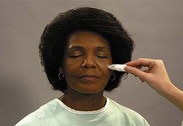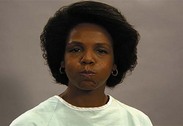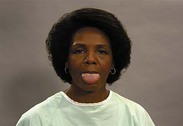EXAMINATION
Assess the neurologic system as the rest of the body is examined. When history and examination findings have not revealed a potential neurologic problem, perform a neurologic screening examination as shown in the box on p. 244, rather than a full neurologic examination. See Chapter 17, Musculoskeletal System, for evaluation of muscle tone and strength, because these findings are important for interpreting neurologic system examination findings. The mental status portion of the neurologic system examination is found in Chapter 2.
Neurologic Screening Examination
This shorter screening examination is commonly used for health visits when no known neurologic problem is apparent.
Cranial Nerves
Cranial nerves II through XII are routinely tested; however, taste and smell are not tested unless some aberration is found.
Proprioception and Cerebellar Function
One test is administered for each of the following: rapid rhythmic alternating movements, accuracy of movements, balance (Romberg test), gait, and heel-toe walking.
Sensory Function
Superficial pain and touch at a distal point in each extremity are tested; vibration and position senses are assessed by testing the great toe.
CRANIAL NERVES I-XII
The table below summarizes the cranial nerve (CN) examination. When a sensory or motor loss is suspected, be compulsive about determining the extent of the loss.
Procedures for Cranial Nerve Examination
| TECHNIQUE | FINDINGS |
|---|---|
| Assess olfactory nerve (CN I) | |
| Ask patient to close eyes. Occlude one naris, hold vial (using least irritating aromatic substances first [e.g., orange or peppermint extract]) under nose, and ask patient to breathe deeply and identify odor. Allow patient to breathe comfortably, then occlude other naris and repeat with different odor. Continue, alternating two or three odors. | EXPECTED:Able to perceive and usually identify odor on each side. |
| UNEXPECTED:Anosmia, loss of smell or inability to discriminate odors. | |
| Assess optic nerve (CN II) | |
| See tests for visual acuity and visual fields in Chapter 7, Eyes. | |
| Assess oculomotor, trochlear, abducens nerves (CN III, CN IV, CN VI) | |
| See tests for six cardinal points of gaze, pupil size, shape, response to light and accommodation, and opening of upper eyelids in Chapter 7, Eyes. | EXPECTED:Equal pupil size, equal and consensual response to light and accommodation, symmetric eye movements in all six cardinal points of gaze. |
| UNEXPECTED:Absence of lateral gaze. Absence of any expected finding, ptosis. | |
| Assess trigeminal nerve (CN V) | |
| EXPECTED:Symmetric tone. | |
| UNEXPECTED:Muscle atrophy, deviation of jaw to one side, or fasciculations. | |
 Sensation SensationAsk patient to close eyes and report if sensation to touch is sharp or dull as you touch each side of face at scalp, cheek, and chin areas, alternately using sharp and rounded edges of tongue blade or paper clip in an unpredictable pattern. Ask patient to report when the stimulus is felt as you stroke same six areas with cotton wisp or brush. Finally, test sensation over buccal mucosa with wooden applicator. | EXPECTED:Symmetric discrimination of sensations in each location to all stimuli. |
| UNEXPECTED:Impaired sensation. If impaired, use test tubes of hot and cold water to evaluate temperature sensation. | |
| EXPECTED:Symmetric blink reflex. May be diminished or absent if patient wears contact lenses. | |
| Assess facial nerve (CN VII) | |
| EXPECTED:Facial symmetry. | |
| UNEXPECTED:Tics, unusual facial movements, or asymmetry of expression (flattened nasolabial fold, lower eyelid sagging, side of mouth drooping). | |
| UNEXPECTED:Difficulties with enunciating b, m, and p (labial sounds). | |
 Taste (CN VII and CN IX) Taste (CN VII and CN IX)Hold card listing tastes in patient’s view. Ask patient to extend tongue. Apply one of four solutions to lateral side of tongue in appropriate tastebud region. Ask patient to point to taste perceived. Offer patient a sip of water, and repeat with different solution and applicator, testing each side of tongue with each solution. | EXPECTED:Able to identify sweet, salty, sour, bitter taste bilaterally when placed in appropriate tastebud region. |
| Assess acoustic nerve (CN VIII) | |
 Hearing HearingSee screening tests in Chapter 8, Ears, Nose, and Throat, or use an audiometer to test hearing. | EXPECTED:Adequate hearing bilaterally. |
| Assess glossopharyngeal nerve (CN IX) | |
| Assess vagus nerve (CN X) | |
| EXPECTED:Soft palate rises with uvula in midline. | |
| UNEXPECTED:Failure of soft palate to rise or uvula deviates from midline. | |
| EXPECTED:Upward movement of palate and contraction of pharyngeal muscles, with uvula in midline. | |
| UNEXPECTED:Drooping or absence of arch on either side of soft palate; uvula deviates from midline. | |
| EXPECTED:Water easily swallowed. | |
| UNEXPECTED:Retrograde passage of water through nose. | |
 Speech Speech | UNEXPECTED:Hoarseness, nasal quality, or difficulty with guttural sounds. |
| Assess spinal accessory nerve (CN XI) | |
| See Chapter 6, Head and Neck, and Chapter 17, Musculoskeletal System, for evaluations of size, shape, strength of trapezius and sternocleidomastoid muscles. | EXPECTED:Symmetric size, shape, and strength. |
| Assess hypoglossal nerve (CN XII) | |
| EXPECTED:Tongue midline, symmetric size. | |
| UNEXPECTED:Fasciculations, asymmetry, atrophy, or deviation from midline. | |
| EXPECTED:Able to perform most tongue movements. | |
| EXPECTED:Steady, firm pressure. | |
 Speech Speech | UNEXPECTED:Problems with l, t, d, or n (lingual sounds). |
| PROPRIOCEPTION AND CEREBELLAR FUNCTION | |
| Evaluate coordination and fine motor skills | |
| Have patient sit. | |
 Rapid, rhythmic, alternating movements Rapid, rhythmic, alternating movementsAsk patient to pat knees with both hands, alternately patting with palmar and dorsal surfaces of the hands. Alternatively, ask the patient to touch the thumb to each finger of the same hand sequentially from index finger to little finger and back, one hand at a time. Stay updated, free articles. Join our Telegram channel
Full access? Get Clinical Tree
 Get Clinical Tree app for offline access
Get Clinical Tree app for offline access

| |




























